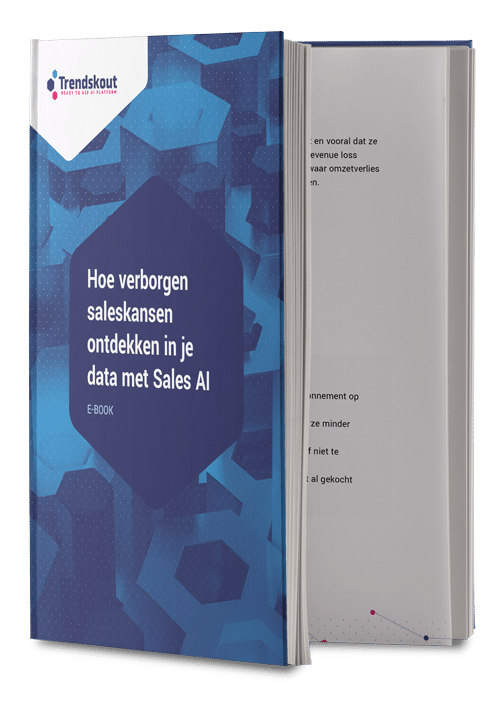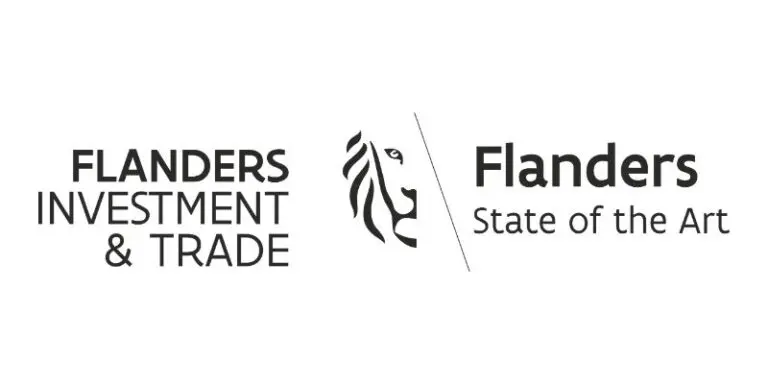Data is everywhere. Companies do not realise it yet. That data is worth its weight in gold. Or better still, data is like oxygen. Inexhaustible, freely available and without us always realising it: vital. Vital for good results. But data must be used well. On the one hand, companies must ensure that the data is captured and, on the other hand, that it is analysed. We give you 5 analysis methods that help you predict sales better. The result: sales can spend their time better and thus become more profitable.

Supervised or unsupervised: which choice do you make?
The world is getting "smarter" every day and to keep up with consumer expectations, companies are increasingly using machine learning algorithms to make things easier. You see them passing in front of you every day such as facial recognition for unlocking smartphones or for detecting credit card fraud (such as alerts for unusual purchases).
There are two basic approaches to artificial intelligence (AI) and machine learning: supervised learning and unsupervised learning. The main difference is that one approach uses labelled data to help predict results, while the other does not. However, there are some nuances between the two approaches, and important areas where one does better than the other.

What is supervised learning?
Supervised learning is an approach to machine learning defined by the use of labelled datasets. These datasets are designed to train or "guide" algorithms in classifying data or predicting results accurately. Labelled inputs and outputs allow the model to measure its accuracy and learn over time.
Supervised learning in data mining can be divided into two types of problems: classification and regression:
- At classification problems an algorithm is used to accurately classify test data into specific categories, such as separating apples from oranges. Or, in the real world, supervised learning algorithms can be used to classify spam into a separate folder from your inbox. Linear classifiers, support vector machines, decision trees and random forest are common types of classification algorithms.
– Regression is another type of supervised learning method that uses an algorithm to understand the relationship between dependent and independent variables. Regression models are useful for predicting numerical values based on various data points, such as sales revenue forecasts for a particular company. Some popular regression algorithms are linear regression, logistic regression and polynomial regression.
What is unsupervised learning?
Unsupervised learning uses machine learning algorithms to analyse and cluster unlabelled data sets. These algorithms discover hidden patterns in data without the need for human intervention (hence "unsupervised").
Models of unsupervised learning are used for three main tasks: clustering, associating and dimensionality reduction:
– Clustering is a data mining technique for grouping unlabelled data together based on their similarities or differences. For example, K-means clustering algorithms assign similar data points into groups, where the K value represents the size of the grouping and the granularity. This technique is useful for market segmentation, image compression, etc.
– Association is another type of unsupervised learning process that uses different rules to find relationships between variables in a given dataset. These methods are often used for market basket analysis and recommendation engines, along the lines of "Customers who bought this item also bought" recommendations.
– Dimensionality reduction is a learning technique used when the number of features (or dimensions) in a given data set is too large. The number of data inputs is reduced to a manageable size, while maintaining data integrity. This technique is often used at the data pre-processing stage, such as when autoencoders remove noise from visual data to improve image quality.
Five concrete examples of analysis methods for sales
Example 1: How many sales will we close next quarter?
TypeSupervised learning based on regression
For this purpose, we use the available sales data. This could be, for example, the monthly sales of a customer. The data then comes from their ERP system.
How can this lead to more sales? Sales forecasting with regression helps to set more realistic targets and in this way to better motivate a sales team.
Linear regression is most commonly used. This is quite easy to calculate. Sales managers can do this using Excel. Linear value estimation helps better estimate sales targets and so sales managers can provide a sales team with honest, realistic but also definitely ambitious goals. Setting realistic goals creates a working environment with a team that is more engaged and thus will become more productive. Data mining using regression is a method that attempts to estimate a numerical value for a variable. In this example, that would be revenue per customer. Sales managers can use that data to build an analytical model looking at customers and historical ERP transactions. Regression always estimates total revenue on a periodic basis using sales data.
Example 2: "Will the customer proceed to order when approached and visited?"
TypeSupervised on the basis of classification
Here, you can tackle it with a combination of data from your CRM and your ERP. Key account managers will focus on the customers where there is a high probability of spotting an order. On a periodic basis, the closing rate will improve.Estimating the probability per class. This will allow your closed sales to boom.
A good example of a predictive analytics method for a problem that deals with classification is classifying accounts according to whether or not they will buy. Approaching and visiting a customer can be quite expensive in B2B, so Key Account Managers look at how likely it is that a customer will proceed to place an order.
This example assumes two classes; 'will buy' and 'will not buy'. The model will look at and predict which group a customer belongs to. Applying it will speed up sales by focusing the resources you have, which by the way are already limited, on what is promising. Classification is somewhat akin to regression, but the two are quite different. Informally, classifying will predict whether something will happen or not, while regression predicts the amount of it.
Example 3: "Are there any segments of customers where there is a risk of them dropping out?"
Type: Unsupervised with clustering
The ERP transactions and the CRM data can be used to reduce customer drop-outs. Significantly improving customer retention is interesting for both sales and marketing.
Clustering is a method whereby a sales director receives valuable input for decision making and knows where the priorities lie. Winning back a customer in B2B is costly, so clustering allows you to accelerate sales by avoiding wasted resources. This is a predictive analytics method combined with machine learning that offers good results for analytics bijzoder.
Clustering divides customers into groups by similarities that are usually not about a specific purpose. Unsupervised data mining can in some cases discover whether there are segments of accounts that are at risk of change.
Example 4: "Is there a causal link between sales promotions and an improvement in the sales figures?"
Type: Supervised
Data required for success: CRM sales activity. The model can be improved by using ERP data. How does the method lead to better sales? Sales directors can identify sales actions that generate the best results. For example, a sales director could determine if there is a certain segment that is more likely to buy after the targeting. Was this because the phone call or visit influenced the sales decision? Or did the model just do its job properly through identification and is there no other influence?
Causal modelling can be understood as counterfactual. This type of modelling tries to find out what the differences would be between opposing sales actions if they did not occur or if they did occur. Predictive analysis can accelerate sales by discovering apparent relationships between sales activity and sales result. Causality can imply a cause-and-effect principle. It helps to understand which sales actions actually influence results.
Example 5: "Which behaviour makes that key account manager the most successful?"
Type: Unsupervised
Example of available sales data: CRM. In addition, there may be ERP data that can help to improve the model. How does this analysis bring in more sales? Sales directors can identify successful behaviour and use this to promote it in a more targeted way.
Sales behaviour is never simple, the number of follow-ups, recommendations sent, number of visits, time of sales calls, customers visited, social media, and so on. For example, if a sales manager knows that the most successful key account managers only make limited targeted visits, he/she can set incentives based on quality. If the focus is on quality of a targeted number of visits, sales will in turn improve.
Fascinating? There is more!
The question now is: how do you set up those analyses? It is easier than you think. The Trendskout platform links data, such as CRM and ERP data, to algorithms. On the platform, all possible algorithms are run through at high speed until the intended output is reached. You can start working with this output immediately, as in the examples above. In other words, you do not need to build up endless Excels, you do not need to hire data scientists and the output is available very quickly.
Still a bit unclear? Think of it as the rules of a party game, difficult to explain but you'll soon get the hang of it once you start playing. That is why we like to organise a demo. Based on a use case that is very much in line with your wishes. Book a demo today and understand the great added value for your business!

